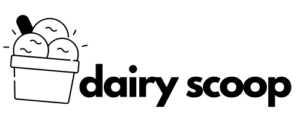
Southern Ireland is the EU’s land of milk while Castilla y León in Spain is its breadbasket.
For statistical purposes, the European Union is divided into 242 regions, and Eurostat has announced that the Southern Ireland region produced the highest value of milk of all 242 regions in 2021, the most recent year for which these figures are available.
The Southern Ireland region of the EU comprises counties Carlow, Clare, Cork, Kerry, Kilkenny, Limerick, Tipperary, Waterford, and Wexford. According to Eurostat, these counties produced €2.4bn worth of milk in 2021. Southern Ireland topped Bretagne in France (€2bn), and Lombardia in Italy (€1.8bn). Five other regions generated milk to a value of at least €1bn. They were Pays-de-la-Loire and Basse-Normandie in France, Weser-Ems and Schleswig-Holstein in Germany, and Galicia in Spain.
Southern Ireland was one of eight regions where the share of the value of milk production was at least 40% of the value of total agricultural output in 2021. Dairy supplied 43.5% of the region’s value of total agricultural output. In only four other regions was dairy so important. They were Friesland in the Netherlands (47.3%), Região Autónoma dos Açores in Portugal (46%), Franche-Comté in France (45.6%), and both Salzburg and Vorarlberg in Austria (43.5% each). Pohjois- ja Itä-Suomi in Finland (42.7%), and Cantabria in Spain (41.3%) also got more than 40% of agricultural output from milk in 2021.
In another 14 regions, the share of the value of milk production was between 30% and 40% of the value of total agricultural output. These regions were in Germany (six regions), the Netherlands (three regions), Sweden (two regions), Austria (one region), Spain (one region), and in France (one region).
With the EU producing €58bn of milk in 2021, Southern Ireland produces more than 4% of this. This contributed in turn to both Ireland’s €10.1bn of total agricultural output, and Southern Ireland’s €5.5bn.
Cereals with €64.4bn of output in 2021, together with milk, account for just under 30% of the value of total EU agricultural output.
The Castilla y León region of Spain produced the highest value of cereals, €2. 3bn.
Unfortunately, both Southern Ireland and Castilla y León are far from being the most agriculturally prosperous regions in the EU. They are well behind Andalucia in Spain, where much of the €14.5bn of agricultural output in 2021 came from the region’s intensive forced cultivation of fruits grown under hothouse conditions. The region’s sea of greenhouses is clearly visible from space.
As for Southern Ireland, many in the dairy industry fear that threats to Ireland’s nitrates derogation will topple the region from its EU-leading position as a milk producer.
Already, about 2,096 Irish farmers with a whole farm stocking rate greater than 220 kg of N/ha (in 2022) are affected by the reduced Nitrates Derogation stocking rate upper limit in 2024. Their stocking rate must be reduced below 220 kg (averaged over the calendar year). This means some cattle must be culled, or enough slurry exported off the farm, or extra land acquired, or using the services of a contract rearer.
The worst-hit counties are Cork, Tipperary, Kilkenny, Laois, Monaghan, and Wexford.
The ongoing review of the Nitrates Action Programme required by the European Commission may identify further Irish areas that will have to move in 2025 from the current maximum derogation stocking rate of 250 kg N/ha.
Unless water quality can be improved, Ireland may not be able to get the derogation renewed again at the end of 2025.
Only Ireland and Denmark have the derogation.
In about 17 months, a vote of the 27 member states will determine if Ireland’s derogation is renewed again at the end of 2025. Most of the 27 do not have the derogation themselves and see it as a competitive advantage that Ireland has.


